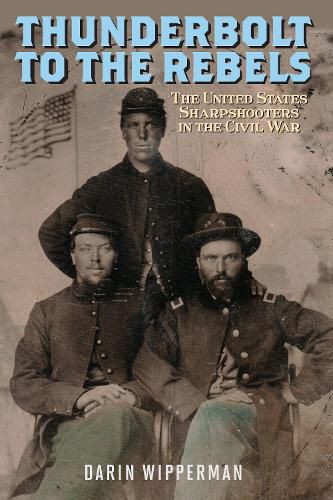Readings Newsletter
Become a Readings Member to make your shopping experience even easier.
Sign in or sign up for free!
You’re not far away from qualifying for FREE standard shipping within Australia
You’ve qualified for FREE standard shipping within Australia
The cart is loading…






Sharpshooters were the elite of the Union army. Clad in green uniforms and equipped with the era's latest rifles and scopes, they took up positions out in front of the infantry, where they targeted Confederate officers or skirmished with enemy soldiers. However they were used, sharpshooters formed an important presence on battlefields throughout the Civil War, and yet most accounts have tended to focus on their distinctive uniforms and cutting-edge equipment rather than on their combat performance. Without slighting the role played by their gear, especially their rifles, Thunderbolt to the Rebels tells the story of these Civil War deadeyes on battlefields from Antietam to Gettysburg and beyond.
During the first year of the Civil War, engineer and inventor Hiram Berdan proposed the creation of a unit of marksmen armed with Sharps rifles, and thus were born the 1st and 2nd U.S. Sharpshooters. Drawn heavily from the Upper Midwest and New England, as well as Pennsylvania, the soldiers had to pass a marksmanship test to join: 10 shots in a 10-inch-diameter circle from 200 yards. They were issued green uniforms for better camouflage, which also helped Confederate riflemen target them. The job of a sharpshooter was dangerous and demanding - much of it out in front of the army, much of it alone - but the 1st and 2nd U.S.S.S. accomplished their missions and made a difference on the battlefield.
Thunderbolt to the Rebels uses primary sources, especially eyewitness accounts from veterans, to reveal how these elite marksmen lived, fought, and died during the Civil War.
$9.00 standard shipping within Australia
FREE standard shipping within Australia for orders over $100.00
Express & International shipping calculated at checkout
Stock availability can be subject to change without notice. We recommend calling the shop or contacting our online team to check availability of low stock items. Please see our Shopping Online page for more details.
Sharpshooters were the elite of the Union army. Clad in green uniforms and equipped with the era's latest rifles and scopes, they took up positions out in front of the infantry, where they targeted Confederate officers or skirmished with enemy soldiers. However they were used, sharpshooters formed an important presence on battlefields throughout the Civil War, and yet most accounts have tended to focus on their distinctive uniforms and cutting-edge equipment rather than on their combat performance. Without slighting the role played by their gear, especially their rifles, Thunderbolt to the Rebels tells the story of these Civil War deadeyes on battlefields from Antietam to Gettysburg and beyond.
During the first year of the Civil War, engineer and inventor Hiram Berdan proposed the creation of a unit of marksmen armed with Sharps rifles, and thus were born the 1st and 2nd U.S. Sharpshooters. Drawn heavily from the Upper Midwest and New England, as well as Pennsylvania, the soldiers had to pass a marksmanship test to join: 10 shots in a 10-inch-diameter circle from 200 yards. They were issued green uniforms for better camouflage, which also helped Confederate riflemen target them. The job of a sharpshooter was dangerous and demanding - much of it out in front of the army, much of it alone - but the 1st and 2nd U.S.S.S. accomplished their missions and made a difference on the battlefield.
Thunderbolt to the Rebels uses primary sources, especially eyewitness accounts from veterans, to reveal how these elite marksmen lived, fought, and died during the Civil War.